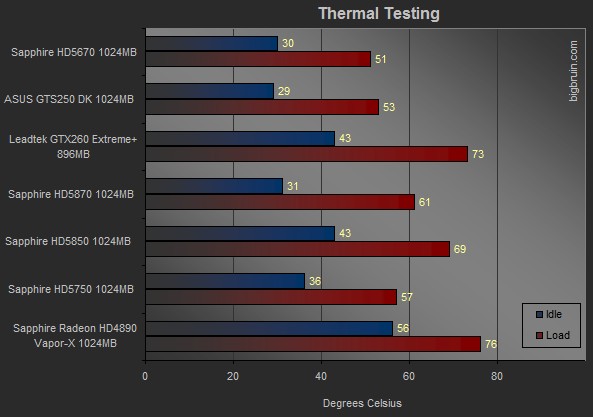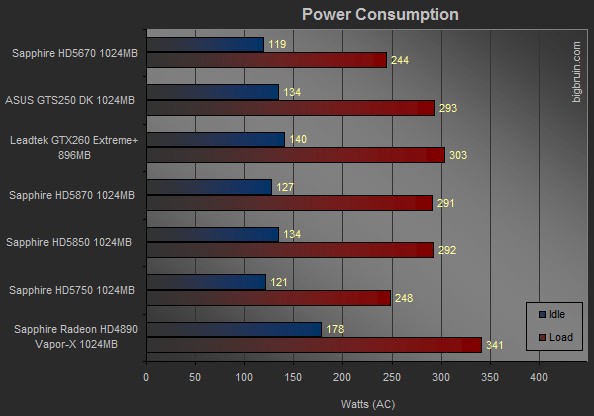Testing (continued):
Thermal Testing:
Thermal testing was conducted by monitoring the GPU temperatures of each card using HWMonitor 1.14 64-Bit. The idle condition was established by recording the temperature after letting the system sit for 30 minutes with only HWMonitor launched. The load condition was established by running 3DMark Vantage two times back-to-back, followed by two back-to-back sessions of the Resident Evil 5 benchmark. HWMonitor is able to log current, minimum, and maximum temperature, so once all testing was completed, the maximum temperature was recorded. All testing was completed on an open testbed with relatively still air in a room with an ambient temperature of 20C.

Now here is something to get excited about! The HD5670 idled at a cool 30C, and when stressed with some demanding 3D graphics processing it only heated up to 51C. That is the lowest temperature of any card tested, and cooler than some cards run while at idle. All of this was achieved in near silence as well, since the Arctic Cooling branded cooler never made much noise at all.
Power Consumption Testing:
Power consumption testing involved the use of a Seasonic Power Angel AC power monitoring device to keep track of the AC Wattage drawn by the test system. Since all hardware other than the graphics card remained the same from test to test, any change in the power reading can be attributed to the demand of the graphics card. Idle conditions were established by letting the system sit at the Windows desktop until a stable value was achieved, and for load testing 3DMark Vantage was executed two times back-to-back.

While the system with the HD5670 installed drew the least electricity, I was surprised to see just how high it actually got. It is roughly equivalent to the draw of the HD5750, which required a single 6-pin PCI Express power connection to operate. Putting up the best results in this test is definitely a plus, but I suppose I was expecting even better as I started this test.